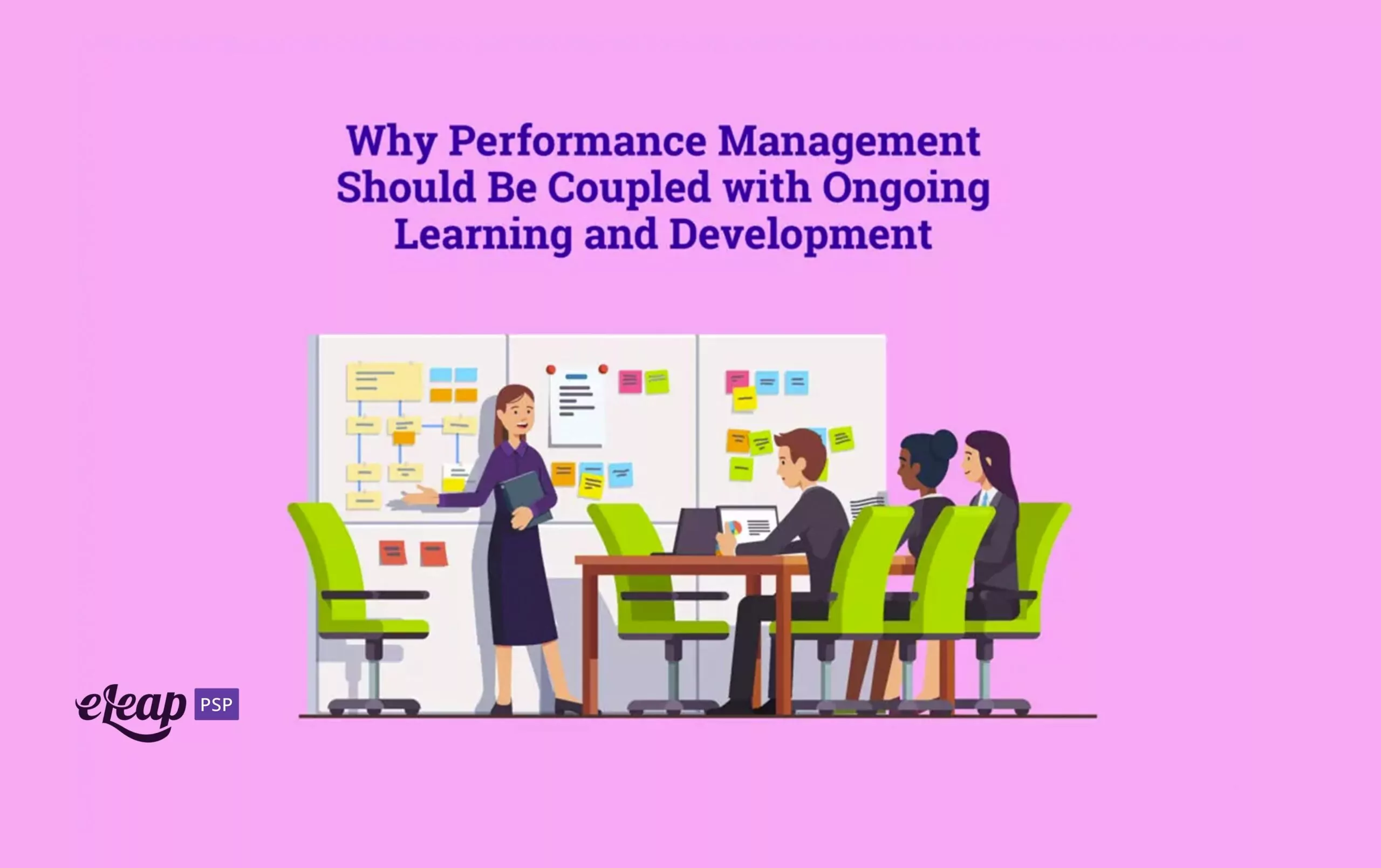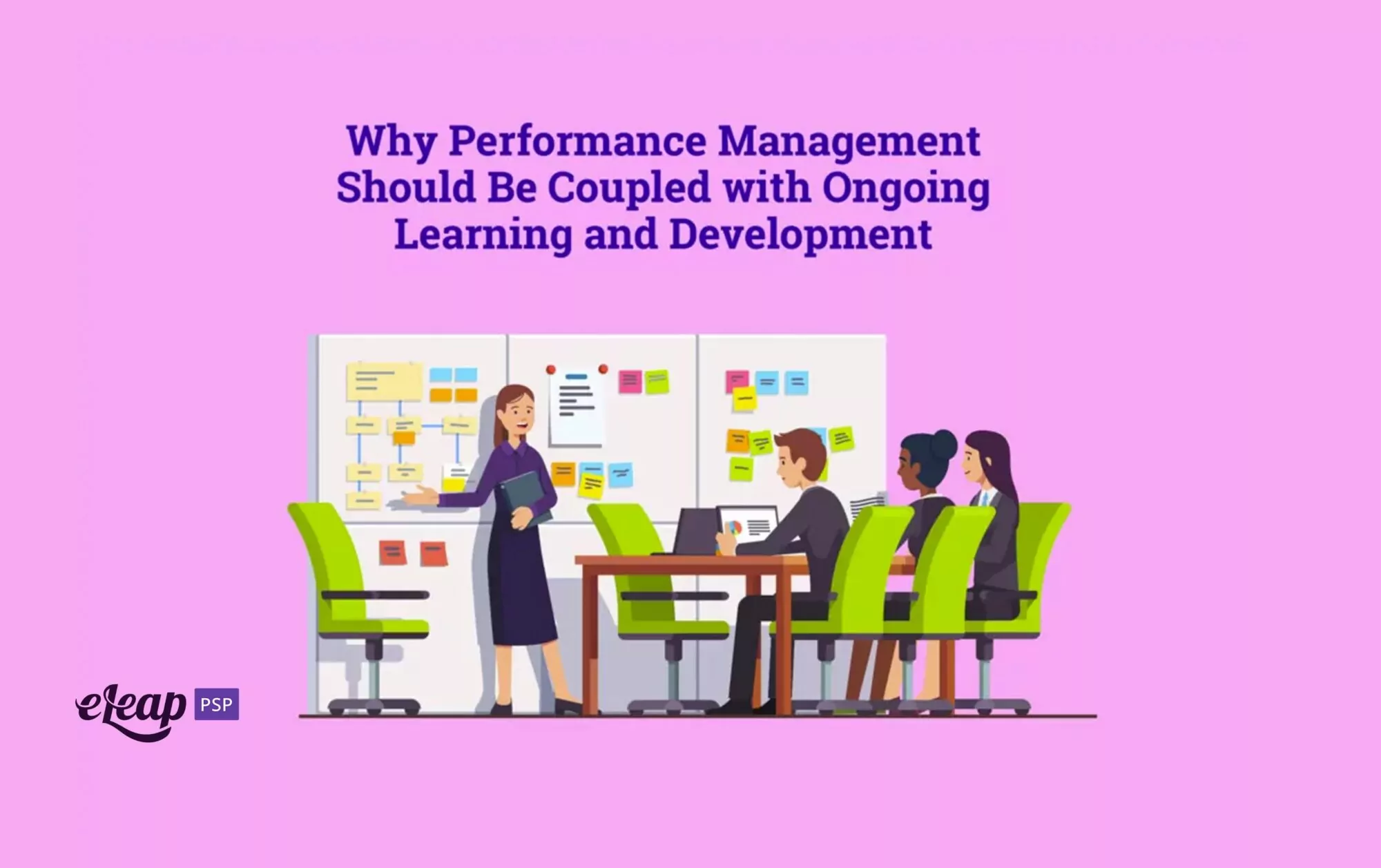Why Performance Management Should Be Coupled with Ongoing Learning and Development

Performance management and learning and development (L&D) might, at first glance, seem to be unusual bedfellows. However, they are two sides of the same coin. You cannot manage performance if you’re unable to provide your employees and team members with the tools, knowledge, and skills necessary to improve their performance. You’re not going to see much in the way of results. Not sure that L&D should be coupled with performance management? We’ll explore that below.

What Is Learning and Development?
L&D is precisely what it sounds like – the act of providing your team members with training and upskilling solutions to help them become better at what they do. A good example can be seen in the required continuing education for compliance reasons. Nurses, for instance, must regularly complete continuing education to maintain their credentials. It’s not just about rubberstamping a form, either. During CE, they learn new techniques, are introduced to new care concepts, and learn skills necessary to provide their patients with improved outcomes.
The same holds true for the employees within your organization. They need the ability to grow and improve, expand their skill set and become more successful at what they do. L&D provides the means to do just that.
How Does L&D Fit within Performance Management?
So, how does learning and development dovetail with performance management? Again, they’re two faces of the same situation. Without the ability to train and develop employees, you can coach them all you want, but improvements will be few and far between.
Of course, to truly understand the relationship here, you need to get beyond the outdated mindset that performance management is little more than an annual review in which you provide a critical assessment of an employee and determine whether or not they’ll get a raise. It’s evolved far beyond that today.
Instead of annual reviews, many companies are committing to ongoing coaching in short time frames. This allows the employee time to make course corrections that will have an impact rather than simply having someone point out what they’ve done wrong. It’s about being constructive rather than critical.
By engaging in ongoing coaching, creating a two-way conversation, and providing relevant, timely feedback, you can build a stronger team overall. You’re also able to reduce churn and retain key talent.
Now, add education and training to the mix. By doing so, you enable your team to achieve the goals that you set for them. You also ensure that they have the skills and knowledge necessary to move up within the organization rather than job-hopping to find a better employer, higher compensation, or a company that values them.
Let’s look at it this way:
You have an employee. We’ll call him Bob. You pull Bob aside for his monthly performance review and coaching session. For the most part, he did fine. However, there were a few areas where he didn’t hit the mark and failed to reach stated objectives. You mention that to him, and when the session is done, you tell Bob that you’re looking forward to next month’s review to see how far he’s gone toward improving his performance.
That’s great and all, but now Bob is stuck with a problem. How does he reach those likely arbitrary-sounding objectives? What does he need to hit the mark? What if he doesn’t know how to improve those aspects of his performance?
Pointing out that someone is not reaching an objective only works if the other person knows what’s necessary to improve their performance.
Here’s another way to look at the situation:
Performance is nothing more than transforming learning into output. You take what you have learned and turn it into productivity, efficiency, quality, customer service, product uniformity, and dozens of other metrics. When looked at from this perspective, the connection between performance management and L&D becomes even clearer.
Establishing a Loop
More and more, we’re coming to realize that nothing we do is “once and done.” Performance management is an ongoing process of developing our team members. L&D is a lifelong process. Both are cycles – loops, if you will.
You must be able to transform your performance management and learning and development processes into two halves of the same loop. How do you do that, though? What would such a loop look like? Here are a couple of the high points:
- Measure: Identify the impact of skills and knowledge on organizational processes.
- Support: Define how you can support more effective learning across the business.
- Mind the Gap: Define the skills and knowledge gap that affects your employees and their duties.
- Connect: Link performance review feedback to development milestones to help close skills/knowledge gaps.
- Promote: As your employees become more knowledgeable and competent, promote from within to retain talent and maximize your investment.
- Rinse and Repeat: Again, there’s no such thing as a “once and done” process. You need to assess, coach, train, and then start the process over again.
Often, bridging the gap between L&D and performance management will require that you get both HR and learning on board. However, once you do, you can create dedicated teams that work in tandem to ensure that you can identify areas where improvement is necessary and then provide employees with the means to make the needed improvements.
In Conclusion
Learning is directly linked to performance. Performance is just learning in motion. It’s transforming what we have learned into a result that benefits the business.
Employees need both sides of the coin – the knowledge that they need to improve and the means to upskill and close the gaps in their knowledge and competencies. Without both, you’re fighting a losing battle. However, if you’re able to successfully couple ongoing learning and development with performance management, you’ll be able to meet your organization’s changing needs and provide value to your employees.